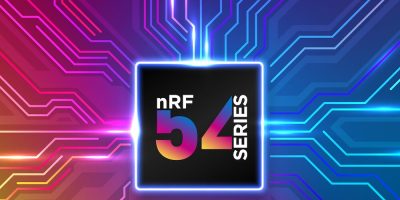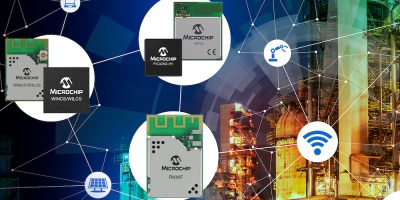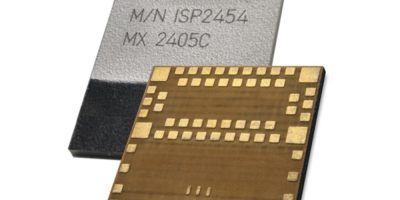With three SoCs from the new nRF54L series, the nRF54L15, nRF54L10 as well as nRF54L05, Rutronik is expanding its portfolio of Bluetooth Low Energy Systems-on-Chip (SoCs) from Nordic Semiconductor. Higher performance, efficiency and security make this recently launched product the optimal and future-proof choice for realising the next generation of wireless IoT products.
All SoCs in the nRF54L series offer MCU functionality with a 128 MHz Arm Cortex-M33 processor, doubling the processing power and tripling the processing efficiency – compared to the nRF52840. This enables enhanced functionality in end products while consuming up to three times less power.
Security is one of the key challenges in the (I)IoT environment, which is why Nordic Semiconductor relies on advanced security features with physical protection for the nRF54L series: secure booting, secure firmware updates, secure storage, as well as a TrustZone-enabled trusted execution environment, a cryptographic accelerator with side-channel leakage protection and tamper detectors, already allow the development of applications that will meet future security regulations.
The hardware and software highlights of the nRF54L series compared to the predecessor flagship nRF52 (nRF52840):
• Significantly better specifications in terms of:
o Arm Cortex-M33 (128 MHz), instead of Arm Cortex-M4 (64 MHz)
o 1.5 MB NVM / 256 KB RAM, instead of 1 MB Flash / 256 KB RAM
o Bluetooth LE version 6.0 and higher, instead of Bluetooth LE version 5.4
Further benefits:
• Non-volatile memory: 1.5 MB (nRF54L15) // 1.0 MB (nRF54L10) // 0.5 MB (nRF54L05)
• 256 KB RAM (nRF54L15) // 192 KB RAM (nRF54L10) // 96 KB RAM (nRF54L05)
• Ultra-low power multiprotocol 2.4 GHz radio: Bluetooth Low Energy, Bluetooth Mesh, Bluetooth Channel Sounding, Zigbee, Thread, Matter, proprietary 2.4 GHz protocols and support for ecosystems such as Amazon Sidewalk, Google Find My Device and Apple Find My
• RISC-V co-processor and integrated peripherals: new real-time global clock, also available when the system is switched off, 14-bit analogue-to-digital converter and high-speed serial interfaces
• PSA Level 3 certified
• Design flexibility & pin-to-pin compatibility
Application examples:
• Smart Home & Matter, Smart Wearables, VR/AR,
• PC peripherals, HID, remote control
• (Industrial) IoT, building automation, access control
• Medical / healthcare, fitness







